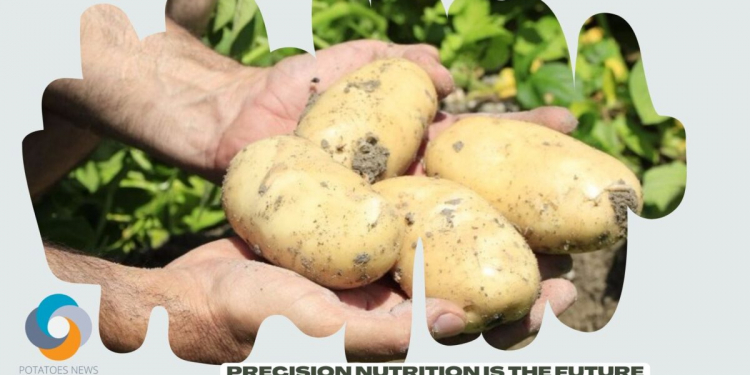ICL Speciality Fertilizers in the UK recently launched a new knowledge hub online to help growers understand the different types of efficiency fertilisers and benefits. The company says in a news post: “precision nutrition is the future“.
For almost 200 years, it says, agriculture and horticulture has used the addition of fertilisers to enhance crop growth by supplying the key elements that plants need to boost yield and quality. Fertilisers have played an important part in significantly raising the yield of the land, so ensuring that every hectare supports more and more of the world’s population.
Estimates show that between 1960 and 2020, the number of people that can be fed from a hectare of land has more than doubled to 5.6. Innovations such as controlled release fertilisers, that match nutrient availability to crop need, will play an important role in meeting these future demands.
Increasing productivity
Fertilisers can indeed double or triple farm productivity: for every single kg of nutrients applied, farmers obtain approximately 5-30 kg of additional produce (although this will vary per crop). Yet the statistics on average nutrient use efficiency – the proportion of nutrients actually used by crops in the first year after application – are stark.
For fertilisers applied to major cereal crops, nitrogen efficiency is around 40-65 percent, potassium efficiency in the region of 30-50 percent and phosphorus efficiency just 15-25 percent.
The above figures are for plots managed by agronomic researchers. Values for nitrogen use efficiency on fields managed by farmers are even less encouraging. Up to 70-80 percent of applied N can be lost when fertilisers are improperly managed. (Fertilizer International 474, p32).
Controlled release fertilisers (CRF)
Controlled release fertilisers (CRF) are helping farmers get the most out of their nutrients. Just one single application of controlled release fertilisers, can manage the nutrition during a complete crop cycle. Coated fertilisers make fertilisation plans much easier and reduces environmental impact.
Efficient use of crop nutrients is becoming increasingly important; from feeding a growing world population, to minimising risk of environmental harm and making best use of scarce, and increasingly expensive inputs to crop growth.
The nutrient uptake dilemma
Despite the successful increase in crop production, to which fertilisers have made a significant contribution, there remains the dilemma. Crop nutrients are applied to crops on a few occasions in a growing season; whereas, crops take up nutrients a little at a time hour by hour and day by day.
Early in the season as small annual crops establish, or as perennial crops emerge from winter dormancy, uptake is quite small each day. Many fertilisers are soluble and volatile, so applied early in the season large amounts of nutrient are available – far more than the crop’s immediate need.
Nutrient losses
Nitrogen not taken up can be lost, either through leaching – a process whereby the nutrient is washed through the soil and into drainage systems – or through volatilisation. The latter is particularly significant from urea-based fertilisers where the element is converted to ammonia and can be lost to the atmosphere as gas.
For the farmer, or grower, these losses affect crop and economic performance. The crop does not have some nutrients for growth and the grower loses the value of the fertiliser that is lost.
For the environment, the impact is also potentially bad. Fertilisers leached to waterways can, in extreme conditions cause algal blooms that threaten aquatic life; it can also reduce water quality. Losses to the atmosphere can add to the problems of climate change. Ammonia, while not one of the gases normally classed as Greenhouse Gas, is injurious to the atmosphere and health.
What is nutrient use efficiency?
Having the right nutrients available to match crop needs plays an important part in achieving a high nutrient (or nitrogen) use efficiency (NUE). This is a measure of how well all the nutrients come together for optimum crop performance. The major nutrients – nitrogen, phosphorus, potassium – as well as calcium, magnesium and sulphur are linked, in as much as a shortage of one can impair the ability of a crop to fully utilise other elements that may be in plentiful supply.
How CRF technology can help
Help is at hand in the form of ‘controlled release fertilisers’ (CRF) that use smart technology and provides nutrition at a rate that matches much more closely the availability of nutrients to the plant’s need.
The principle is simple, the technology complex. The E-Max Release Technology developed by ICL is described as an ‘innovation’ in controlled release nutrients. In essence, the fertiliser is covered in a special coating that – once in contact with the soil and associated moisture – begins to take up water. As the moisture content builds up in each granule of fertiliser, so the osmotic pressure increases and nutrients start to ‘escape’ into the soil via micropores in the coating.
Thus the nutrients disperse gradually into the zone around the roots and are available as the plant requires it. This minimises the risk of valuable nutrients being lost from the crop and ending up causing adverse effects to air or water.
ICL Fertilizers produce a range of blends and can tailor the contents of each fertiliser to the needs of specific crops.
Please go here to visit the new knowledge hub for more information and trial results.

